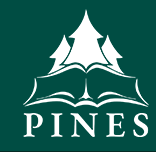Date of Award
9-2013
Document Type
Thesis
Department
Mathematics
First Advisor
Glen Richgels
Abstract
Imagine a math classroom that looked more like a Google workplace where collaboration, teamwork, and innovation are the centerpieces. Instead of just students sitting in rows passively learning about the nature of mathematics, picture a classroom of students in small circle discussing mathematics. This could range from groups working together on a problem solving strategy for a newly learned concept, students helping students using technology as an aid, another small group receiving intervention from the teacher, or individual students making or viewing instructional math videos. All of this according to research focused on classroom differentiation; specifically in middle school and high school math classrooms can be a reality. Differentiation among classrooms has become a popular topic in educational circles, but for math teachers has been a source of skepticism. Is it possible to build a math classroom around the philosophy of differentiated instruction? With continued hard work of math educators to provide the best math curriculum possible, concentrated teacher training, and focused implementation of new technologies that include smart devices such as iPads this pedagogy is very possible. This paper will explore the strategies and models of the differentiated math classroom and its functional reality.
Recommended Citation
Morris, Carl Jeff, "Can the Differentiated Math Classroom be a Reality?" (2013). Mathematics Graduate Theses. 16.
https://pines.bemidjistate.edu/thesis-math/16
Included in
Curriculum and Instruction Commons, Disability and Equity in Education Commons, Educational Assessment, Evaluation, and Research Commons, Educational Methods Commons, Educational Technology Commons, Elementary and Middle and Secondary Education Administration Commons, Junior High, Intermediate, Middle School Education and Teaching Commons, Mathematics Commons, Science and Mathematics Education Commons, Secondary Education Commons, Secondary Education and Teaching Commons


